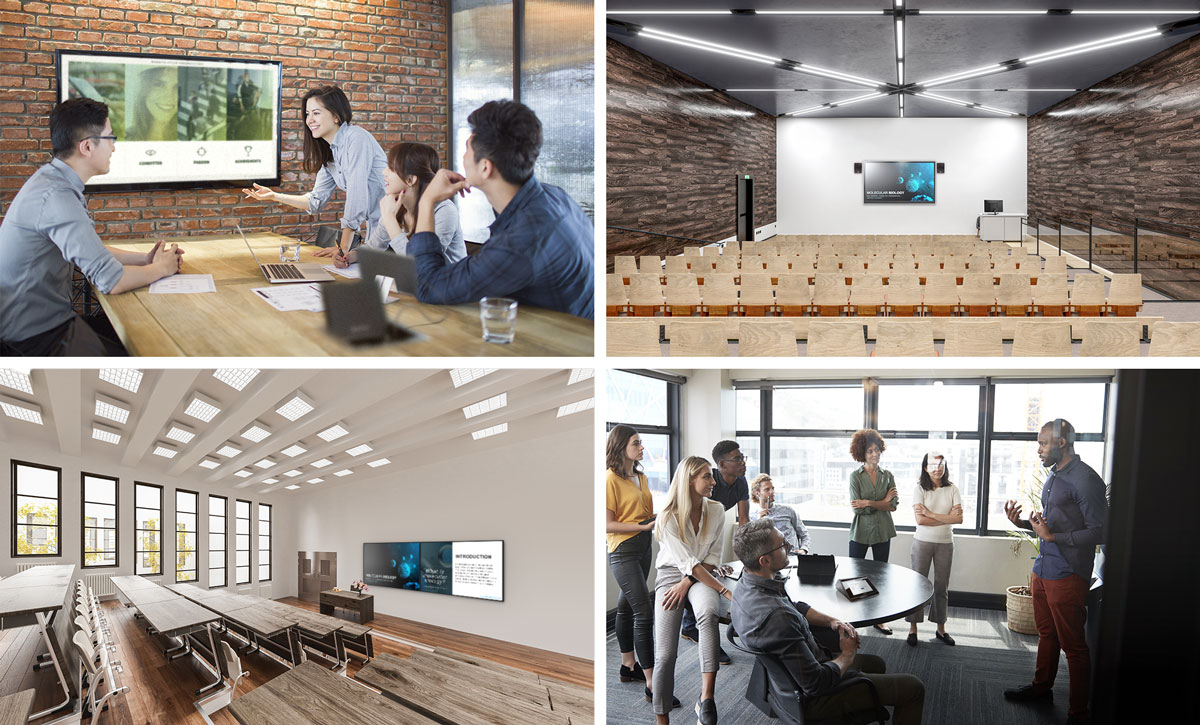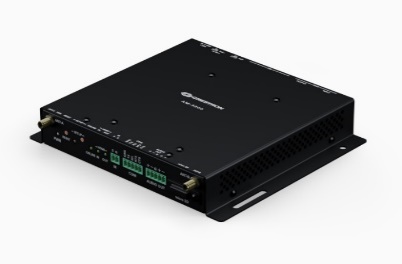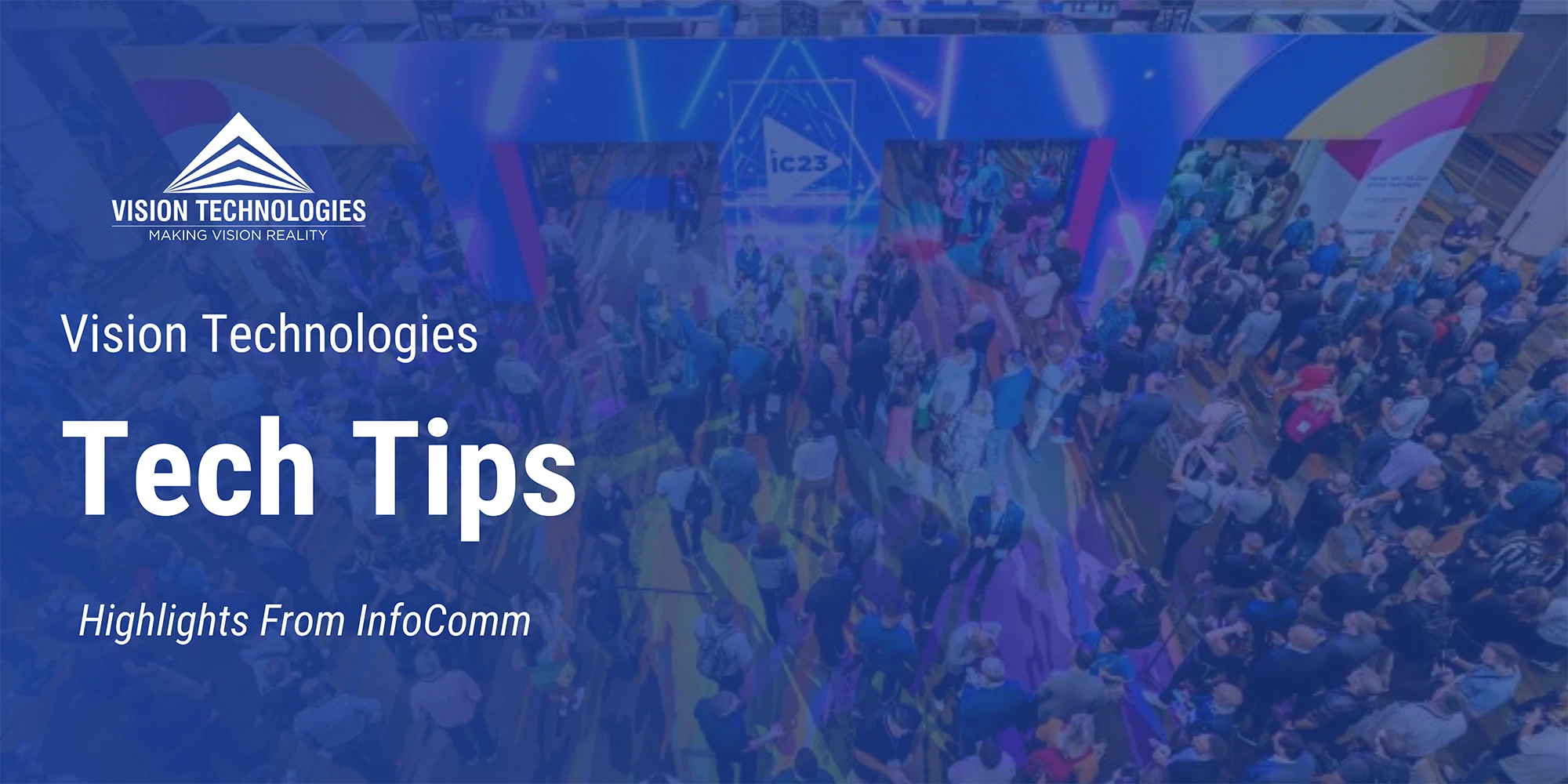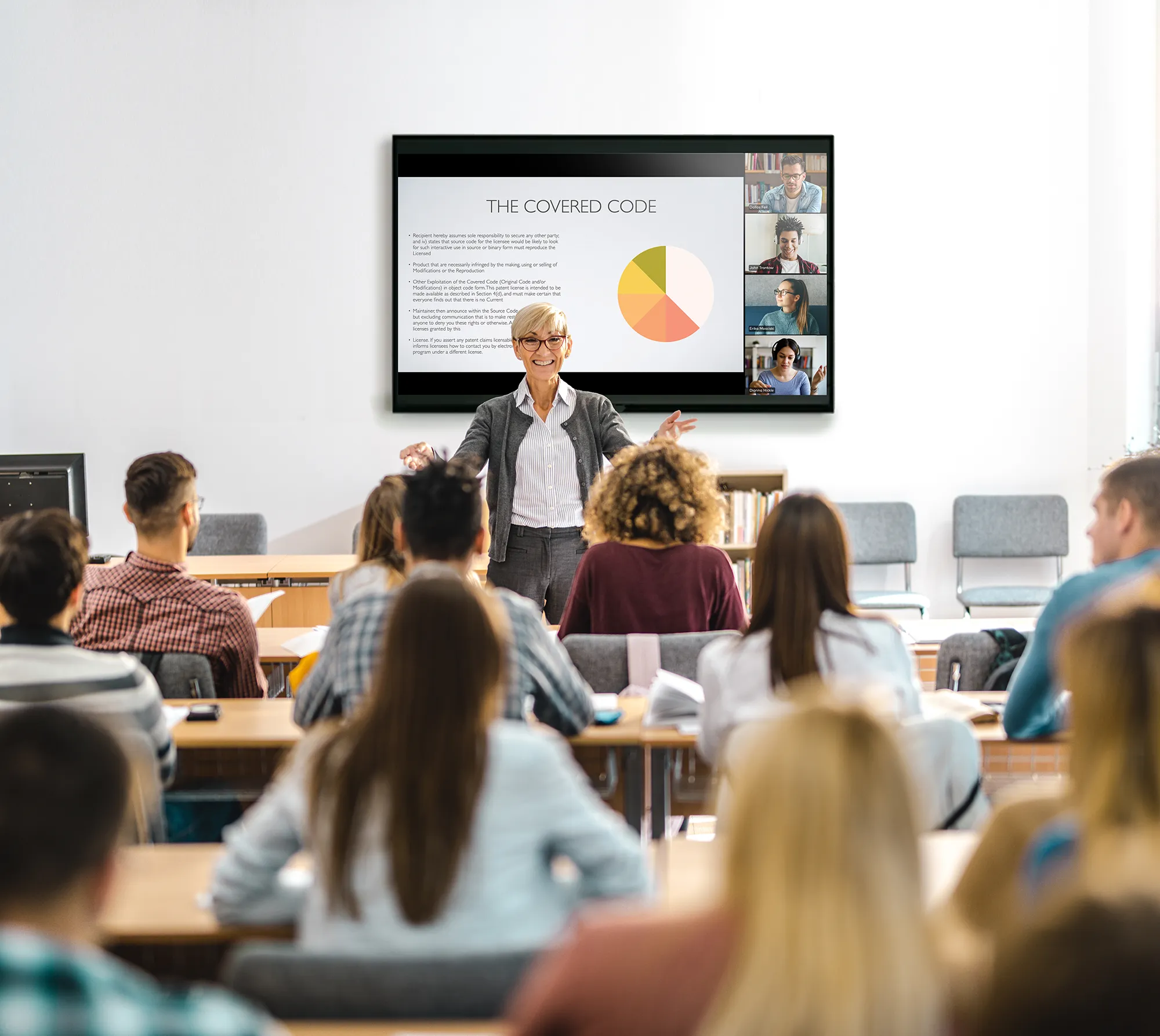AV Trends in Higher Education
For the past three years in higher education the focus has been on hybrid learning, and it’s not over. The pandemic showed institutions how effective and flexible hybrid or remote learning can be.
Whether institutions were rushing, or took a more deliberate approach to hybrid learning, they are now stepping back to see what worked, asking, what were the levels of student engagement and when did the technology work most effectively? Institutions are now thinking about the camera experience — considering when they will need a wide shot of an entire room, a close up of a presenter, or camera tracking.
When institutions needed to do a quick pivot to hybrid, they did whatever necessary to get hybrid learning in place, but now realize that they have high value or high visibility spaces and want to create the best experience in those areas, while considering the circumstances of instructors and remote and in-person learners. Keep reading for more in depth insight into trends involving audio visual solutions in the higher education setting.
Download the Keys to Hybrid Learning ebook for insight you can take away for later.
Futuristic Trends
- Active learning, which asks students to engage in learning through discussion, investigation, and creating, has come back but now incorporates flipped classrooms– recorded content that a professor wants them watch, on their own, and then discuss in class.
- Extended Reality Labs (or XR Labs) with AR, VR, or a combination of both technologies will grow significantly. In these spaces, students have VR goggles used to experience different places, various simulations, study certain objects, and more. Some institutions may not have enough goggles for each student in a particular class or lab, but with most VR goggles, the video the student is viewing can be sent back to a PC and distributed around the room to various displays for the entire class. Another use case can be when an expert can see and remotely diagnose an issue which a field technician is looking at firsthand.
- Simulation labs, teaching kitchens, and other environments where students get to dive deep into experiential learning or even gamification learning, are becoming more prevalent. And eSports is still growing and benefits students through the teaching of time management, team building, and collaboration. The eSports approach to learning — motivating students using video game design and gaming elements — has led to a more widespread gamification of learning.
The user experience from an instructor standpoint is so important that it should be at the forefront of designs. Automation has made systems more sophisticated but also more complex and instructors don’t have the bandwidth for all the necessary training. Ideally, if instructors could enter a space, scan their RFID card, and bring up previously set configurations or preferences, it would eliminate many training requirements saving time for both faculty and technicians.
This also allows faculty to not be concerned with automation and have no need avoid it. Think of it this way. You have this fully automated teaching kitchen or lab with cameras and displays, but the instructor can’t easily operate it and monitor students then it becomes useless, and the instructor will be migrating around the room. The investment has gone to waste.
These are all features that need to be thought about before the design and room integration begins to make the hybrid learning experience equitable for all and unify the relationship between pedagogy and technology. Just as things have changed over the past three years, it’s more than likely that they will continue to do so, but with the right solutions integrating technology and learning will not be a perennial process.
Active Learning Solutions

Some futuristic trends are already here and have been incorporated by Crestron into its active learning solutions. Crestron’s AirMedia® allows instructors or participants to simply connect and transmit wirelessly over AirMedia to ensure every device can be used. And Crestron DM Lite extenders with built-in chargers are a quick and easy way to simply get content to the screen from anyone’s personal device. Mixing and matching DM Lite transmitters, receivers, and switchers can create simple systems for most spaces and even add more capabilities, such as wireless conferencing or lighting control.

With 1 Beyond cameras, Crestron provides native Intelligent Video conferencing options to allow for equitable learning and training for remote participants, allowing students and trainees who are remote to still feel immersed in the lesson. While Automate VX adds improved quality of close-ups in existing meeting rooms with optical zoom, it also provides a reliable speaker tracking experience (switching between presenter/teacher and students) using mics in the room and high production value audio without programming for ease of operation and adaptation. This provides quality learning environments for schools, training rooms, and more and is essential in upskilling students.
Crestron technology in an active learning environment enriches the overall learning experience, in room and remotely, and makes it easy to route and control all the audio and video capabilities in the room facilitating a better, more engaging learning experience.
Vision Technologies partners with industry leading technology and manufacturing partners like Crestron to help give our customers access to solutions that fit their needs and enrich the student and faculty experience across campuses of all sizes.




